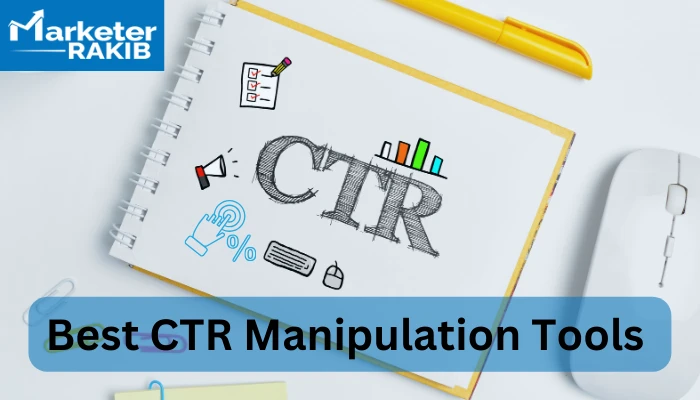GMB CTR Manipulation: Drive Even More Web Traffic to Your Google My Service Listing
GMB CTR Manipulation: Drive Even More Web Traffic to Your Google My Service Listing
Blog Article
CTR Manipulation for Boosted Online Search Engine Advertising And Marketing
In the world of online search engine advertising and marketing, the tactical control of Click-Through Fees (CTR) stands as an essential aspect in boosting campaign performance and presence. The capacity to influence customer involvement with CTR not just influences ad positioning but also dictates the general success of digital advertising and marketing endeavors. By understanding the subtleties of CTR control, online marketers can unlock the trick to opening greater positions and increased brand name exposure. Nevertheless, the concern continues to be: How can services effectively navigate the intricate landscape of CTR optimization to drive meaningful outcomes in an ever-evolving digital sphere?
Comprehending Click-Through Rates (CTR)
Recognizing Click-Through Rates (CTR)
Click-Through Price (CTR) is an essential statistics in electronic marketing that measures the percentage of individuals that click on a certain web link out of the complete variety of people who watch it. CTR is determined by splitting the number of clicks on a specific web link by the variety of perceptions it obtains and after that multiplying by 100 to get a portion. If an advertisement gets 100 clicks after being shown 1000 times, the CTR would be 10%.
A high CTR signifies that the advertisement or web link is resonating well with users, while a reduced CTR might show that adjustments are needed to enhance efficiency. In addition, CTR plays a significant function in establishing ad placement and expense in platforms like Google Advertisements, where higher CTRs can lead to better advertisement positioning and lower expenses per click.
Significance of CTR Control
Click-Through Price (CTR) adjustment holds a substantial function in enhancing the efficiency of digital advertising campaigns. CTR is a key metric that measures the effectiveness of an ad or a search outcome in capturing the focus of individuals. By manipulating CTR, marketers can improve their advertisement performance, increase site traffic, and eventually boost conversions.
Greater CTRs indicate that individuals locate the ad or search result beneficial, triggering search engines to rate the web page greater in search results. Additionally, a well-optimized CTR can lead to a reduced cost-per-click (CPC) and a greater Quality Rating, which can result in better advertisement positioning and reduced advertising expenses.
In today's competitive digital landscape, where every click matters, grasping CTR manipulation techniques is crucial for online marketers wanting to optimize their on the internet presence and drive significant results.

Methods for Enhancing CTR
To enhance the efficiency of digital advertising campaigns and drive increased customer engagement, employing efficient techniques for increasing Click-Through Price (CTR) is vital. One approach is crafting compelling ad copy that orders the customer's attention and entices them to click. Using appropriate keywords in the advertisement duplicate can likewise raise the chance of attracting clicks from users looking for specific terms. Additionally, maximizing ad expansions, such as sitelinks and callouts, can give individuals with even more details about the service or product, encouraging them to click through.
An additional reliable method is A/B testing different ad variations to identify which resonates finest with the target audience - CTR Manipulation Press Release. By testing components like headings, summaries, and phones call to activity, marketers can improve their ads to make best use of CTR. Implementing ad scheduling to present advertisements during height engagement times can additionally increase CTR by getting to individuals when they are most active online
In addition, leveraging ad retargeting can assist re-engage customers who have actually formerly interacted with the website but did not transform. By presenting targeted advertisements to check my source these individuals, online marketers can increase the possibility of them clicking through and finishing a preferred activity.

Devices for Keeping Track Of CTR
Checking Click-Through Rate (CTR) is a critical facet of managing successful search engine advertising projects. It enables you to track CTR for various key words, ads, and touchdown pages, enabling you to determine what is functioning well and what requires improvement. By leveraging these tools, marketing experts can acquire valuable understandings and make data-driven decisions to boost click for source their CTR and overall search engine advertising and marketing performance.
Gauging CTR Success
As marketers aim to maximize their search engine advertising projects, the efficiency of Click-Through Price (CTR) serves as an essential indicator of success. A high CTR suggests that the ad is reverberating well with the target audience and driving web traffic to the website - CTR Manipulation.
By tracking CTR variations between desktop computer and mobile tools or different ad placements, marketers can customize their techniques to take full advantage of engagement. Keeping an eye on the CTR over time enables marketing experts to recognize trends, examine the effect of modifications in advertisement duplicate or targeting, and make data-driven decisions to improve campaign efficiency.
Conclusion
To conclude, CTR manipulation is an essential component of online search engine marketing that can dramatically influence the efficiency and exposure of on-line advertising campaigns. By carrying out techniques to boost click-through prices, marketing professionals can enhance their on-line existence, signal significance to online search browse this site engine, and eventually drive much better results for their campaigns. Constant surveillance and screening of CTR efficiency are essential for enhancing advertising efforts and remaining competitive in the electronic landscape.
Report this page